"I don't know who will read this. I guess someone will find it eventually. Maybe in a hundred years or so." -Mark Watney
174 posts
Latest Posts by inter-stellxr-blog - Page 5
People: you should talk more
Me: *tries to talk*
- gets interrupted
- gets ignored
- gets talked over
- no one pays attention
- no one cares

Space imaging progress..
via reddit







I can’t believe Mars has more water than California.
The Martian Movie and Our Real Journey to Mars
The Martian movie is set 20 years in the future, but here at NASA we are already developing many of the technologies that appear in the film. The movie takes the work we’re doing and extends it into fiction set in the 2030s, when NASA astronauts are regularly traveling to Mars and living on the surface. Here are a few ways The Martian movie compares to what we’re really doing on our journey to Mars:
Analog Missions

MOVIE: In the film, Astronaut Mark Watney is stranded on the Red Planet.
REALITY: In preparation for sending humans to Mars, we have completed one of the most extensive isolation missions in Hawaii, known as HI-SEAS. The goal of this study was to see how isolation and the lack of privacy in a small group affects social aspects of would-be explorers. The most recent simulation was eight months long, and the next mission is planned to last a year.
Spaceport

MOVIE: The Martian movie launches astronauts on the Aries missions from a refurbished and state of the art space center.
REALITY: Currently, the Ground Systems Development and Operations’ primary objective is to prepare the center to process and launch the next-generation vehicles and spacecraft designed to achieve our goals for space exploration. We are not only working to develop new systems, but also refurbishing and upgrading infrastructure to meet future demands.
Deep Space Propulsion

MOVIE: In the film, the astronauts depart the Red Planet using a propulsion system know as the Mars Ascent Vehicle (MAV).
REALITY: We are currently developing the most powerful rocket we’ve ever built, our Space Launch System (SLS). Once complete, this system will enable astronauts to travel deeper into the solar system than ever before! The RS-25 engines that will be used on the SLS, were previously utilized as the main engine on our space shuttles. These engines have proven their reliability and are currently being refurbished with updated and improved technology for our journey to Mars.
Mission Control

MOVIE: In the movie, Mission Control operations support the Aries 3 crew.
REALITY: On our real journey to Mars, Mission Control in Houston will support our Orion spacecraft and the crew onboard as they travel into deep space.
Habitat

MOVIE: The artificial living habitat on Mars in The Martian movie is constructed of industrial canvas and contains an array of life support systems.
REALITY: The Human Exploration Research Analog (HERA), formerly known as the Deep Space Habitat, is a three-story module that was designed and created through a series of university competitions. Studies conducted in habitat mockups will allow us to evolve this technology to create a reliable structures for use on Mars.
Rover

MOVIE: The characters in the film are able to cruise around the Red Planet inside the Mars Decent Vehicle (MDV).
REALITY: We are currently developing a next generation vehicle for space exploration. Our Mars Exploration Vehicle (MEV) is designed to be flexible depending on the destination. It will have a pressurized cabin, ability to house two astronauts for up to 14 days and will be about the size of a pickup truck.
Harvest

MOVIE: Astronaut Mark Watney grows potatoes on Mars in The Martian movie.
REALITY: We’re already growing and harvesting lettuce on the International Space Station in preparation for deep space exploration. Growing fresh food in space will provide future pioneers with a sustainable food supplement, and could also be used for recreational gardening during deep space missions.
Spacesuit

MOVIE: The spacesuit worn by astronauts in the film allows them to work and function on the surface of Mars, while protecting them from the harsh environment.
REALITY: Prototypes of our Z-2 Exploration Suit are helping to develop the technologies astronauts will use to live and work on the the Martian surface. Technology advances in this next generation spacesuit would shorten preparation time, improve safety and boost astronaut capabilities during spacewalks and surface activities.
What’s Up for October?

This month is filled with exciting celestial sights. Here are 10 targets you can view this month:
10. Unusual Sunset

During a sunset, our thick atmosphere absorbs most colors of sunlight, but red light is absorbed the least. Rarely, green flashes can be seen just above the sun’s edge. As the last sliver of the disk disappears below the horizon, be sure to watch its color.
9. Belt of Venus

Just after sunset, turn around and face east. A dark shadow will move up from the horizon and gradually cover the pinkish sky. This is caused from the Earth itself blocking the sunlight and is called the Earth Shadow or the Belt of Venus.
8. Crepuscular Rays

Also just after sunset, or before dawn, you may see rays of sunlight spread like a fan. These are called crepuscular rays and are formed when sunlight streams through gaps in the clouds or mountains.
7. Aurora Borealis

The northern lights, also known as the aurora borealis, are caused by collisions between gaseous particles in Earth’s atmosphere and charged particles released from the sun. The color of the lights can changed depending on the type of gas being struck by particles of solar wind. You can find out when and where to expect aurorae at the Space Weather Prediction Center.
6. Andromeda Galaxy

Did you now that The Andromeda Galaxy is one of the few you can actually see with your naked eye? In October, look nearly overhead after sunset to see it! This galaxy is more than twice the apparent width of the moon.
5. Moon Features

Nights in mid-October are excellent for viewing the features on the moon. Areas like the Sea of Tranquility and the site of the 1969 Apollo 11 landing will be visible.
4. A Comet

This month, the European Space Agency’s Rosetta mission target, a comet with a complicated name (Comet 67P Churyumov-Gerasimenko), is still bright enough for experienced astronomers to pick out in a dark sky. On October 9, you may be able to spot it in the east near the crescent moon and Venus.
3. Meteor Showers

There are multiple meteor showers this month. On the 9th: watch the faint, slow-moving Draconids. On the 10th: catch the slow, super-bright Taurids. And on the 21st: don’t’ miss the swift and bright Orionids from the dust of Comet Halley.
2. Three Close Planets

On October 28, you’ll find a tight grouping of Jupiter, Venus and Mars in the eastern sky before sunrise.
1. Zodiacal Light

The Zodiacal light is a faint triangular glow that can be seen from a dark sky after sunset or before sunrise. What you’re seeing is sunlight reflecting off dust grains that circle the sun in the inner solar system. These dust grains travel in the same plane as the moon and planets as they journey across our sky.
For more stargazing tools visit: Star Tool Box
Make sure to follow us on Tumblr for your regular dose of space: http://nasa.tumblr.com


May 1, 1979 – The prototype Space Shuttle Enterprise rolls out from the Vehicle Assembly Building at Cape Canaveral in Florida.
(NASA/Kennedy Space Center)

Construction Starts for Camera That Will Capture More Galaxies Than There Are People on Earth
Beginning in 2022, the most powerful digital camera ever built will start taking pictures of the southern sky. Over the course of a 10-year mission atop a mountain in Chile, the 3.2 gigapixel instrument is expected to accomplish a feat that might be hard to wrap your mind around. It will record tens of billions of galaxies floating in space–the first time a telescope will have ever identified more of the massive celestial objects than there are people on Earth.
Late last month, the U.S. Department of Energy gave its blessing for researchers to start building the camera that will sit at the heart of the Large Synoptic Survey Telescope (LSST). The gif above shows the three-ton, small-car-sized camera on the left. Illustrated is the system that slides filters down in front of the 3.2 gigapixel CCD, which senses light and is a digital camera’s version of film. The filters will let the camera record in light wavelengths from the near-ultraviolet to the near-infrared. Learn more and see images below.

Keep reading
Top 10 Ways the Space Station is Helping Get Us to Mars
Believe it or not, the International Space Station is paving our way to Mars. Being the only microgravity laboratory in which long-duration investigations can take place, it provides deeper understanding of how the human body reacts to long-term spaceflight. Here are the top 10 ways the space station is helping us on our journey to the Red Planet:
10: Communication Delays

Have you ever sent a text and got frustrated when it took longer than 3 seconds to send? Imaging communicating from Mars where round-trip delays could take up to 31 minutes! Our Comm Delay Assessment studies the effects of delayed communications for interplanetary crews that have to handle medical and other emergencies in deep space.
9. Astronaut Functional Performance

After a long nights sleep, do you ever feel a bit clumsy when you first get out of bed? Imagine how crew members might feel after spending six months to a year in microgravity! Our Field Test investigation is working to understand the extend of physical changes in astronauts who live in space for long periods of time, with an aim toward improving recovery time and developing injury prevention methods for future missions.
8. Psychological Impacts of Isolation and Confinement

In order to study the behavioral issues associated with isolation and confinement, researchers evaluate the personal journals of space station crew members. These study results provide information to help prepare us for longer duration spaceflight.
7. Impacts on Vision

Did you know that long duration spaceflight can often cause changes to crew members’ vision? It can, and our Ocular Health study monitors microgravity-induced visual impairment, as well as changes believed to arise from elevated intracranial pressure. All of this work hopes to characterize how living in microgravity can affect the visual, vascular and central nervous systems.
6. Immune Responses

An important aspect of our journey to Mars is the need to understand how long-duration spaceflight affects they way crew members’ bodies defend agains pathogens. Our Integrated Immune investigation collects and analyzes blood, urine and saliva samples from crew members before, during and after spaceflight to monitor changes in the immune system.
5. Food for Long-Duration Crews

Just like a hiker preparing for a long trek, packing the foods that will give you the most energy for the longest amount of time is key to your success. This is also true for astronauts on long-duration missions. Our Energy investigation measures a crew members’ energy requirements, which is a crucial factor needed for sending the correct amount of the right types of food to space.
4. Exercise for Long-Term Missions

Rigorous exercise is already a regular part of astronauts’ routines, and continuing that focus will be critical to keeping crew members’ bodies strong and ready for a mission to Mars and a healthy return to Earth. Our Sprint investigation is studying the best combination of intensity and duration for exercise in space.
3. Determine Best Habitat/Environment for Crews

Have you ever complained about your room being too small? Imagine living in cramped quarters with an entire crew for months on a Mars mission! Our Habitability investigation collects observations that will help spacecraft designers understand how much habitable volume is required, and whether a mission’s duration impacts how much space crew members need.
2. Growing Food in Space

There’s nothing like fresh food. Not only does it provide valuable nutrition for astronauts, but can also offer psychological benefits from tending and harvesting the crops. Our Veggie investigation studies how to best utilize a facility aboard the space station for growing fresh produce in microgravity.
1. Manufacturing Items in Space

When crews head to Mars, there may be items that are unanticipated or that break during the mission. Our 3-D Printing in Zero-G Technology Demonstration would give crews the ability to manufacture new objects on demand while in space.
Make sure to follow us on Tumblr for your regular dose of space:http://nasa.tumblr.com
Water on Mars!

Did you hear? New findings from our Mars Reconnaissance Orbiter (MRO) provide the strongest evidence yet that liquid water flows intermittently on present-day Mars.
Using an imaging spectrometer on MRO, we found hydrated minerals on slopes where mysterious streaks are seen on Mars. One thing that researchers noticed was that the darkish streaks appear to ebb and flow over time. During warm seasons, they darken and then fade in cooler seasons.

When discovered in 2010, these downhill flows known as recurring slope lineae (RSL) were thought to be related to liquid water. With the recent spectral detection of molecular water, we’re able to say it’s likely a shallow subsurface flow explains the darkening.
Mars is so cold, how could liquid water flow there? Great question! Since this liquid water is briny, the freezing point would be lower than that of pure water. Also, these saline slopes appear on Mars when temperatures are above minus 10 degrees Fahrenheit (minus 23 Celsius).
The dark, narrow streaks flowing downhill in the below image are roughly the length of a football field.

So there’s water, but how much? Currently we think this area has a very small amount of water, probably just enough to wet the top layer of the surface of Mars. The streaks are around four to five meters wide and 200 to 300 meters long.
Could humans drink this water? The salts in the water appear to be perchlorates, so you probably wouldn’t want to drink the water. It would most likely be very salty and would need to be purified before human consumption.
Perchlorate…What is that? A perchlorate is a salt that absorbs water from the air. Learn more about how it’s helping us unlock the mysteries of Mars in this video:
What’s next? We want to look for more locations where brine flows may occur. We have only covered 3% of Mars at resolutions high enough to see these features.
For more information on the Mars announcement, visit our Journey to Mars landing page. There is also a full recap of the press conference HERE, and a short recap below.
Make sure to follow us on Tumblr for your regular dose of space: http://nasa.tumblr.com
Solar System: Top 5 Things to Know This Week
It’s only Tuesday and this week is already filled with news about our solar system. Here are the top five things to know this week:
1) Mars!

With five spacecraft in orbit and two rovers exploring the ground, there’s always something new and interesting about the Red Planet. Yesterday things got even more exciting when we released the most compelling evidence yet that liquid water sometimes flows on Mars today.
2) HTV-5 Cargo Ship

On Monday, the HTV-5 cargo ship was released from the International Space Station to burn up as it reenters Earth’s atmosphere. The HTV-5 carried a variety of experiments and supplies to the space station, and was docked for five weeks.
3) Pluto Continues to Excite

If you haven’t been keeping up with the weekly releases of newly downloaded pictures from our New Horizons spacecraft, you are definitely missing out. But don’t worry, we have you covered. The latest updates can be found HERE, be sure to follow along as new information is released. More images are scheduled to be featured on Oct. 1.
4) Cassini Mission

This week on Sept. 30, our Cassini spacecraft will reach the closest point to Saturn in it’s latest orbit around the planet. Just to put things in perspective, that will be Cassini’s 222nd orbit around Saturn! Learn more about this mission HERE.
5) What Happened to Mars’ Atmosphere?

Believe it or not, the Martian atmosphere we see today used to be much more substantial many years ago. What happened? Our Mars Atmosphere and Volatile EvolutioN (MAVEN) spacecraft has been in orbit around Mars for one Earth year, searching for the answers. Learn more HERE.
Make sure to follow us on Tumblr for your regular dose of space:http://nasa.tumblr.com

Stargazers were treated to a rare sight on Sunday night: a supermoon eclipse. The phenomenon only happens when a full lunar eclipse coincides with the moon’s closest approach to the Earth. Until Sunday night, these events had not occurred in unison for 33 years, and another 18 years will pass before we get to experience a supermoon eclipse again. Learn more and see a gallery of the best supermoon photographs on TIME.com. Photographs by AP; GIF by Mia Tramz for TIME
See more of TIME’s lunar eclipse coverage here.
Water found
This just in, NASA’s study published today reveals that they’ve found liquid water on Mars. It’s confirmed.
if you only have time for one video, make it this one








Amazing photos of U.S. spacewalks throughout the years.

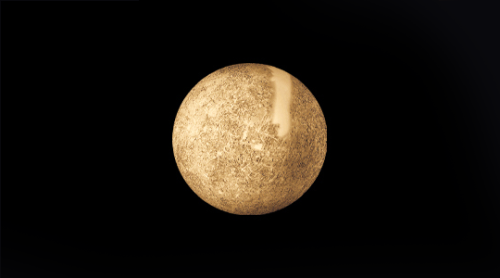
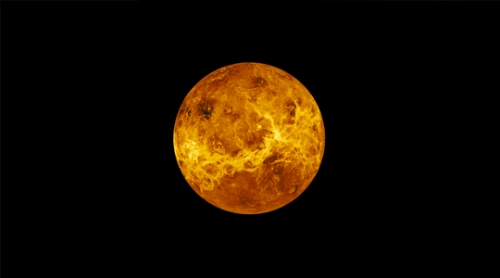
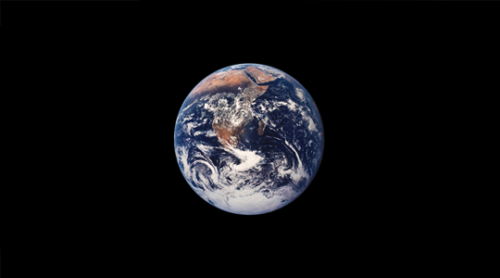
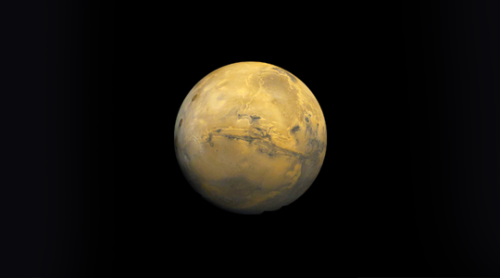
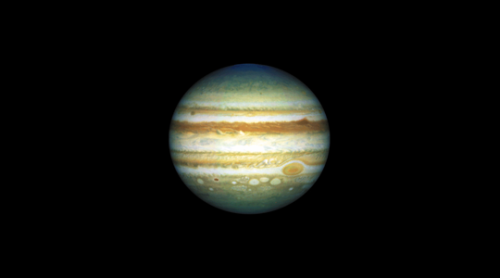


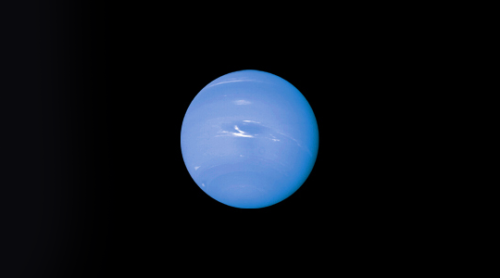
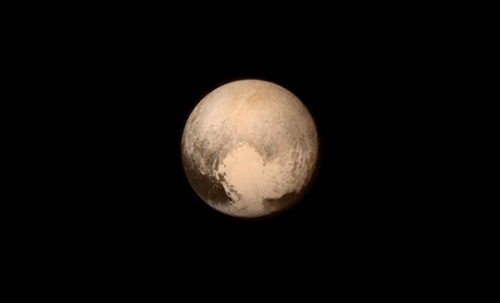

Cygnus entering the atmosphere, photographed by Alexander Gerst on the ISS.

Andromeda Rising over the Alps









The ruins of the Soviet space shuttle program captured by photographer Ralph Mirebs

Meteorite Shower Over McCloud Falls, California
js

There’s been a rather startling decision today amongst the SETI (search for extraterrestrial intelligence) researchers.
Seth Shostak, senior astronomer at the SETI Institute, announced to his peers at a conference today that it’s time to begin what’s known as ‘active SETI’.
This is when we actively broadcast and effectively ‘alert’ potential neighbors to our presence.
Needless to say, this was a very polarizing conference.
People from Stephen Hawking all the way to science fiction writer David Brin have spoken out against broadcasting our presence into interstellar space.
They both have made comparisons to what happened when industrial civilizations first encountered indigenous peoples. Things never went well for the locals.
David Brin spoke at the conference and said, “The arrogance of shouting into the cosmos without any proper risk assessment defies belief. It is a course that would put our grandchildren at risk.”
I was initially sidelined by the idea. SETI Institute has never broadcasted into space in an attempt to make humanity’s presence obvious to alien observers. I hadn’t therefore really considered the topic much and shared the same worries as David Brin initially.
In my opinion though Dr. Shostak put an end to that worry:
“I don’t see why the aliens would have any incentive to do that.
Beyond that, we have been telling them willy-nilly that we are here for 70 years now. They are not very interesting messages but the early TV broadcasts, the early radio, the radar from the Second World War - all that has leaked off the Earth.
Any society that could come here and ruin our whole day by incinerating the planet already knows we are here.”
The point is if there’s a hostile and capable alien presence nearby, they would already know about us. The technology required to get to Earth even from the nearest star system is far more advanced than anything we can even dream up at the moment. Detecting our presence at that point is a cake walk.
Active SETI, would be a redundant risk as we’re clearly visible to those significantly advanced civilizations already (if there are any). That we’re here at all still suggests there are none.
To any nearby neighbors stuck on their home planets or solar systems, we are now going to be actively broadcasting messages.
The search is on.
Read more about today’s meeting at BBC World News.
(Image credit: ESO)

This is how fast the space probe is.
More about New Horizons >>

The Twin Jet Nebula, or PN M2-9, is a striking example of a bipolar planetary nebula. Bipolar planetary nebulae are formed when the central object is not a single star, but a binary system, Studies have shown that the nebula’s size increases with time, and measurements of this rate of increase suggest that the stellar outburst that formed the lobes occurred just 1200 years ago. Credit: ESA/Hubble & NASA Acknowledgement: Judy Schmidt
(via The Twin Jet Nebula | ESA/Hubble)






Mostly Mute Monday: The Glory of Saturn’s Rings
“Saturn is remarkable in a number of ways; among all the planets we know of, it’s the least dense, and also the only one with a spectacularly visible set of rings. Composed of icy, dust-like material, these rings are not solid at all, but made up of particles that pass each other, stick together briefly and then fly apart once again.
Snowballs and planetesimals coalesce, only to be torn apart by tidal forces exerted by Saturn and its passing moons. Gaps in the inner rings are caused by the gravitational presence of moons themselves, while many of the outer rings — like Saturn’s E-ring, below — are actually caused by the moons themselves.”
From their discovery in the 1600s, Saturn’s rings have been a source of wonder and puzzlement to skywatchers everywhere. The only ring system visible through most telescopes from Earth, Saturn’s main rings at more than 70,000 km long, yet no more than 1 km in thickness. Once thought to have only two gaps in them, the Cassini spacecraft has revealed over a thousand, teaching us that Saturn’s rings are likely as old as the planet itself, and will likely continue to exist for as long as our Sun shines.



clouds on mars, photographed by mars express, 16th january 2014.
around 43°s 258°e, one the eastern icaria planum. details from a sequence of 5 monochrome images, colourized with a bit of art and a bit of science.
image credit: esa. animation & colourization: ageofdestruction.



Wernher von Braun’s space station concept in Collier’s, March 22, 1952 - (source)
